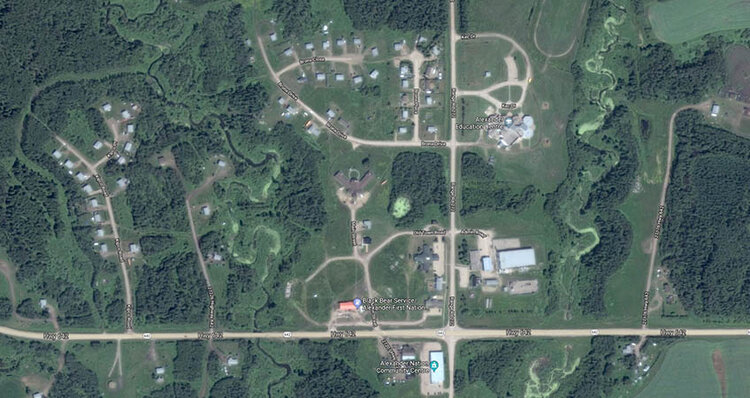Rural Addressing System
Where do you live? It’s a pretty simple question, but when you live on reserve the answer can be either very vague or long and drawn out. Most answers will consist of “go to the powwow grounds and head 2 miles North, take a left after the blue house with the swing set, drive till there’s a big curve and then our driveway is the third on the left.” Landmark based directions give rise to many problems whether you’re directing an ambulance at 2am or trying to get a new couch or pizza delivered.
TSAG has been working closely with First Nation communities to develop road and addressing networks in a format that is recognized by emergency response teams. The first step is to map out all the roads and a team assigned by the Nationassigns names to each. Once the roads are named, addresses are assigned to each building using a system that allowsfor future growth. Once complete, and upon approval from Chief and Council, the roads and addresses are uploaded to the Alberta Municipal Data Sharing Partnership (AMDSP) as well as to Google Maps. The next step in the process is public education and ensuring that members of the community know what their new address is.
Alexander First Nation is the first to have their roads appear on Google Maps. Now, when navigating in Alexander FN, Google Maps will give you turn by turn directions to most addresses. Emergency services have decreased response times with the implementation of road addressing. To inform members of the address change, TSAG will be giving out address magnets at Alexander Treaty Days. For those who might be concerned that this too much information will be shared, we want you to know that no confidential type information (occupants or buildings) is shared with either the AMDSP or Google Maps. The only data that is shared is the: road names, addresses, and information about the roads themselves—such as speed limits and surface material.
TSAG has received requests from several nations to help generate road addressing networks and we will be working with 6 nations this year. For more information on the Rural Addressing System, please contact Elaine Stone, GIS Technician.

